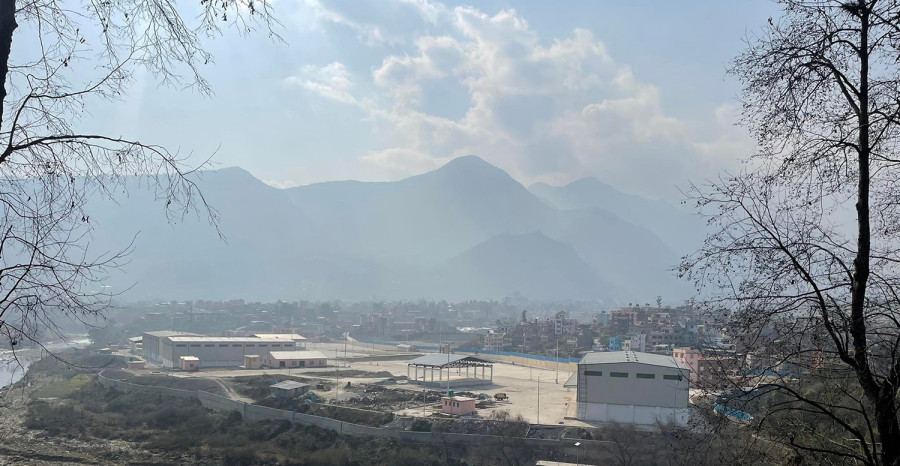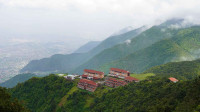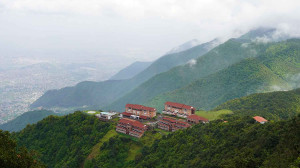Money
Chobhar dry port to open for business by March-end
Occupying 11.77 hectares at the south-western corner of the valley, the Rs2.18 billion facility was built with a World Bank loan.
Krishana Prasain
The much ballyhooed Chobhar dry port is expected to open for business next week, after having lain in hibernation for eight months since construction was completed.
Built at a cost of Rs2.18 billion and occupying 11.77 hectares at the south-western corner of Kathmandu Valley, the Kathmandu Inland Clearance Depot will allow importers to make customs clearance of their goods in Kathmandu, saving them a trip to the border checkpoint where their shipments entered Nepal.
The inland facility providing storage and customs clearance services is not an entirely new concept in Kathmandu. Even during the Rana period, there was Teku Bhansar where cargo arrived from Bhimphedi on the backs of porters or by ropeway, and was customs cleared.
“We are all prepared to bring the facility into operation on March 29,” said Punya Bikram Khadka, spokesperson for the Department of Customs.
According to a notice published in the Nepal Gazette last Thursday, the new facility has been designated as an inland transport facility to facilitate trade from bordering points.
As Nepal's capital Kathmandu is the country’s economic hub with over 50 percent of the economic activities taking place here, the dry port will provide a fillip to its foreign trade, according to the customs officials.
Chobhar dry port is divided into two sections—export-import and domestic. The export-import section can accommodate 116 20-foot equivalent units (TEU), an inexact unit of cargo capacity often used for container ships. The domestic area has parking space for 86 trucks.
Khadka said that, for now, only container trucks coming across the southern border with India would be allowed at the dry port.
Since there is less trade across the northern border with China, Khadka said they didn’t think it necessary to provide customs clearance services in Kathmandu.
“But if the volume of shipments arriving from the north increases in the future, we can provide the facility as necessary,” Khadka said. “There has been no instance of goods coming across the northern border being halted at customs.”
In order to use Chobhar dry port, container trucks have to be equipped with GPS vehicle tracker devices and locking systems. The GPS records container movements all along the shipping route.
The Nepal Intermodal Transport Development Board will operate the newly built dry port at Chobhar for the time being, said its Executive Director Ashish Gajurel.
The government agency, which is responsible for the construction and operation of the dry port, said the infrastructure would be handed over to the private sector through a competitive bidding process.
According to customs officials, the facility had been completed eight months ago, but since it was necessary to finish internal work and enact laws to operate the facility, the launching was delayed.
The Covid-19 pandemic was another reason for the hold-up. But the project did not suffer cost variance, said Gajurel.
The inland port was constructed with a loan from the World Bank.
Gajurel said that 60-70 percent of all imported goods were consumed in the valley, so the facility will be a big respite for traders importing goods for Kathmandu as all paperwork can now be done in the capital.
The Chobar dry port was built in Kathmandu with a long-term vision for trade facilitation.
“Goods can be imported directly to Kathmandu without customs hassles at the southern border points which will be more effective with the completion of the Tarai-Madhes expressway which is under construction,” said Gajurel.
"It will help in minimising the investment cost of traders and save them time."
The then prime minister KP Sharma Oli laid the foundation stone for the dry port on January 17, 2019 amid protests by locals that the government was using force to destroy a place of historical significance by building the facility.
Apart from the historical and religious aspects, the dry port is being built on land formerly occupied by Himal Cement Factory, and a number of issues remain unresolved since it shut down.
The government has claimed that it acquired 1,054 ropanis (53.62 hectares) of land originally belonging to the now defunct cement factory. Of the total, 228 ropanis (11.6 hectares) have been allocated for the construction of the dry port.
An international exhibition centre has been proposed to be built on the remaining 826 ropanis (42 hectares). The dry port will employ around 150 people directly.
Nepal’s total foreign trade reached Rs1.27 trillion in the first seven months of the current fiscal year ended mid-February, according to the Department of Customs.
In the whole of the last fiscal year 2020-21, Nepal’s foreign trade was valued at Rs1.68 trillion.




 6.3200000000001°C Kathmandu
6.3200000000001°C Kathmandu















